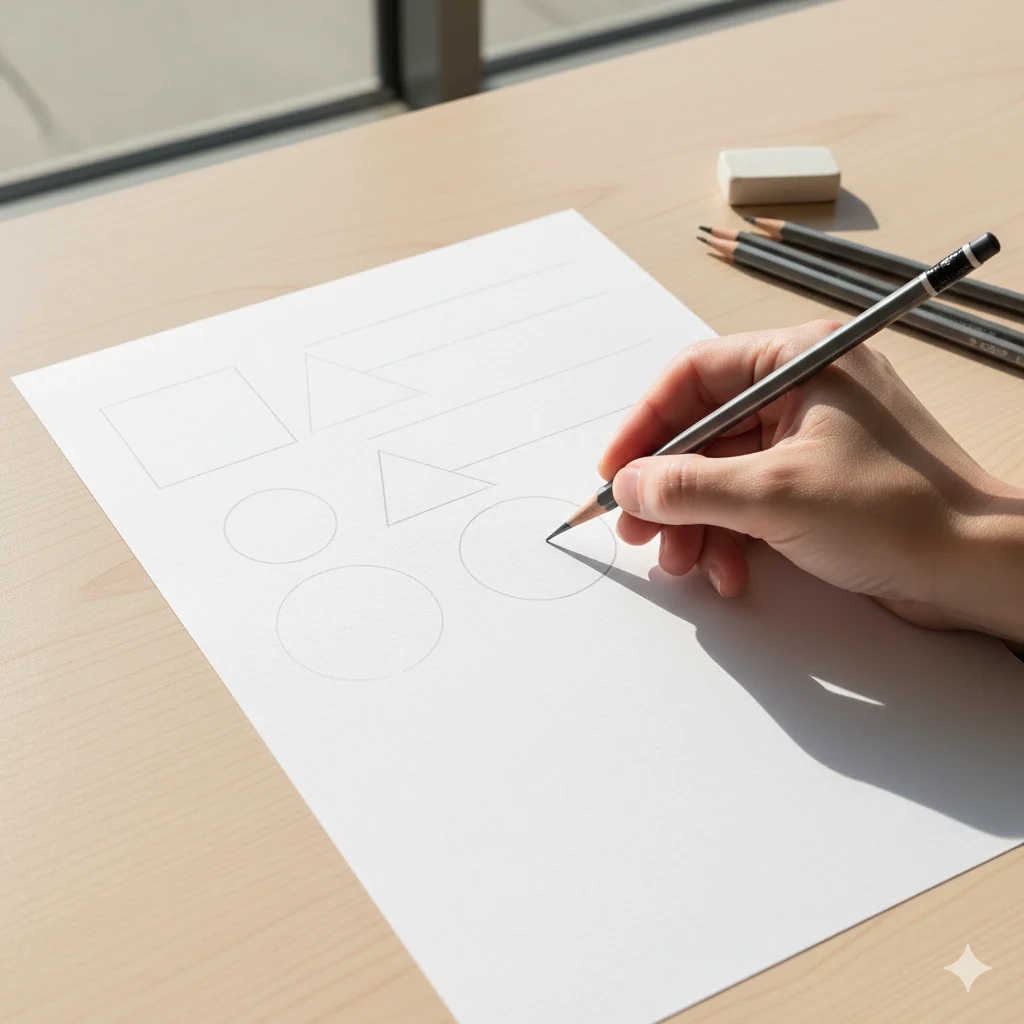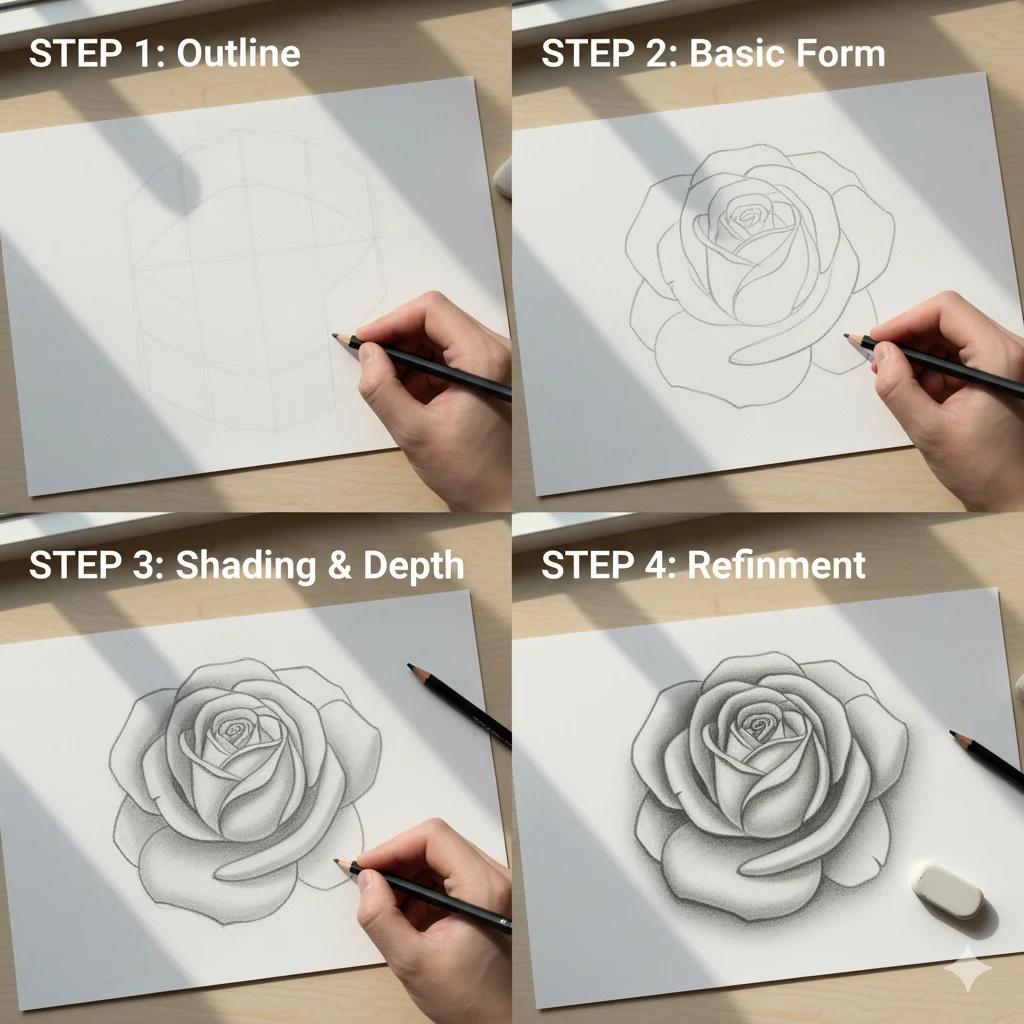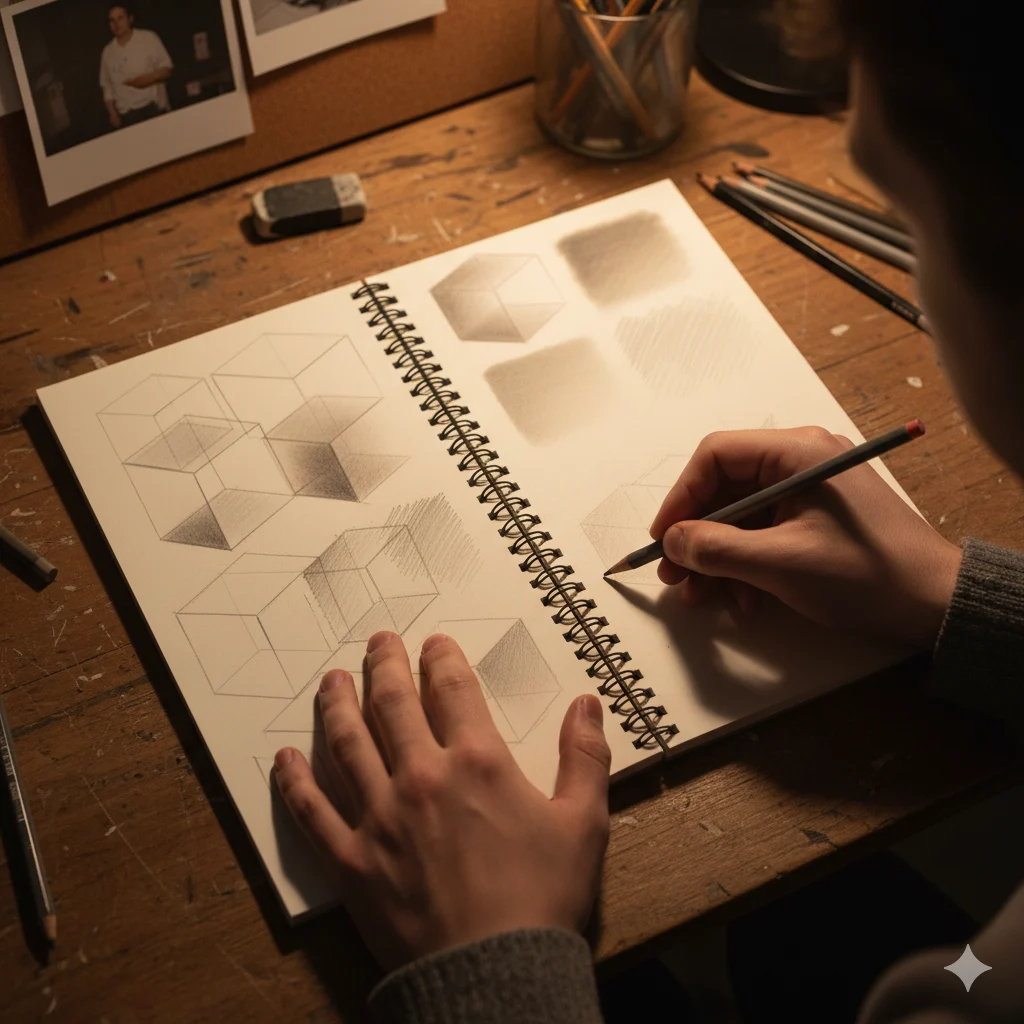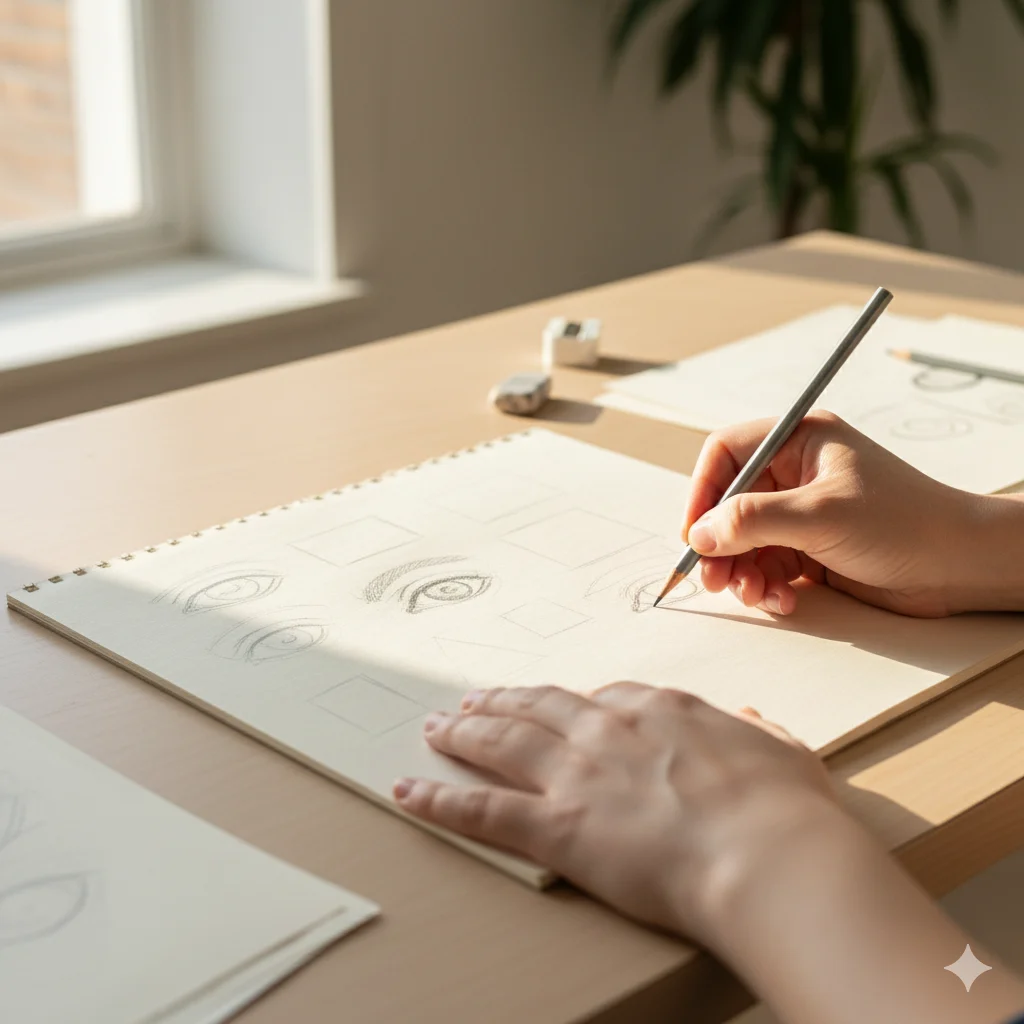Drawing is one of the oldest and most expressive forms of art. From cave walls to digital sketchpads, the ability to draw connects imagination with the real world. Whether you’re a complete beginner or picking up a pencil after years, this guide will teach you how to draw step by step with clear explanations, techniques, and easy drawing ideas.
You don’t need expensive tools or natural talent — just curiosity, patience, and practice. This article focuses on practical drawing basics anyone can follow, written with a people-first approach to help you build skill and confidence at your own pace.
Why Learning How to Draw Is Easier Than You Think
Many people believe drawing is only for those born with artistic talent — but that’s a myth. Drawing is a skill that improves through observation, repetition, and understanding of basic shapes and proportions.
Learning how to draw for beginners is like learning a language. Once you understand its alphabet — lines, shapes, and shadows — you can express anything you see or imagine.
This guide breaks down complex ideas into simple drawing techniques, helping you progress naturally without pressure or confusion.
Essential Tools You Need to Start Drawing
Before diving into techniques, you only need a few basic materials:
- ✏️ Pencils: Start with HB, 2B, and 4B for different line strengths.
- 📄 Paper or Sketchbook: Smooth paper for clean lines; textured paper for shading.
- 🩶 Eraser: Use a soft eraser for light corrections and a kneaded eraser for details.
- 📏 Sharpener: Keep your pencils sharp for control and precision.
💡 Tip: A simple pencil and paper are enough — the best artists started with less, not more.
Understanding the Basics of Drawing

1. Lines and Shapes
All drawings begin with simple lines and shapes. Circles, squares, and triangles form the foundation of almost everything you draw — from faces to buildings.
Practice drawing straight, curved, and diagonal lines daily. These will help improve your control and confidence.
2. Proportion and Perspective
Proportion means understanding how big or small one part of your drawing should be compared to another. Perspective adds depth — it makes flat drawings look three-dimensional.
Start by drawing boxes, roads, or rooms with vanishing points to practice how objects appear smaller as they move away.
3. Light and Shadow
Shading adds realism and texture to your art. Notice how light falls on objects around you — the side facing the light is brighter, and the side away from it is darker.
Practice gentle shading with your pencil to show light, mid-tone, and shadow areas.
How to Draw Step by Step
Here’s how you can start drawing anything — a face, flower, or animal — using a simple process that even absolute beginners can master:

Step 1: Observe Your Subject
Before drawing, take time to look at your object or image. Notice the shape, size, and key features.
Step 2: Break It Down into Shapes
Simplify what you see. A cat’s head might be a circle; its body, an oval; and the tail, a long curved line.
Step 3: Sketch Lightly
Use gentle pencil strokes to outline shapes. Don’t press too hard — drawing lightly allows easy corrections.
Step 4: Refine the Outline
Once you’re happy with the proportions, darken your main lines and remove any rough guidelines.
Step 5: Add Details
Add smaller features — like facial expressions, textures, or folds in fabric.
Step 6: Shade and Finish
Add shading to show light and depth. Blend using your finger or a blending stump for smoothness.
🎨 Remember: Drawing step by step makes even complex art manageable. Start simple, then build gradually.
Common Mistakes Beginners Make (and How to Avoid Them)
Even passionate learners face obstacles. Here’s how to avoid the most common issues:
- ❌ Pressing too hard: Keep strokes light; heavy lines are difficult to erase.
- ❌ Skipping observation: Always study your subject carefully before drawing.
- ❌ Drawing without guidelines: Light outlines help with proportion and structure.
- ❌ Comparing yourself to others: Every artist improves at their own speed — focus on progress, not perfection.
✅ Solution: Practice small sketches daily — consistency beats speed every time.
Helpful Drawing Exercises for Beginners

- Contour Drawing: Draw without lifting your pencil from the page — it trains your eyes and hand coordination.
- Still Life Practice: Draw simple objects like a mug, apple, or candle under good lighting.
- Value Scale: Practice shading from dark to light using different pencil pressures.
- Perspective Boxes: Draw cubes in different positions to understand 3D depth.
These simple drawing exercises will help strengthen your observation and improve your hand control — essential for mastering the art of sketching.
Tips to Improve Your Drawing Faster
- Draw Every Day: Even 10–15 minutes daily creates visible progress.
- Use References: Photos and real-life observation help accuracy.
- Start with Simple Subjects: Begin with easy drawing ideas — fruits, eyes, leaves, or simple houses.
- Learn from Mistakes: Every rough sketch is a step toward improvement.
- Experiment with Styles: Try line art, realism, cartoons, or digital sketching.
Drawing isn’t about perfection — it’s about practice and patience.
How to Stay Motivated While Learning to Draw
It’s normal to get frustrated while learning something new. But remember, every great artist started as a beginner. Keep old sketches to track your progress — seeing how far you’ve come is the best motivation.
Join online art communities or watch tutorial videos when you feel stuck. Seeing others’ growth can inspire your own.
Conclusion
Learning how to draw is one of the most rewarding creative journeys you can take. With consistent practice, simple tools, and a curious mindset, you’ll gradually master the basics of drawing, shading, and perspective.
So pick up your pencil, observe the world around you, and start sketching. Every line you draw brings you closer to your artistic voice.
FAQs
1. Can anyone learn how to draw?
Yes! Drawing is a skill, not a talent. Anyone can learn it with patience and consistent practice.
2. How long does it take to learn drawing?
Most beginners see improvement within a few weeks of daily practice, though mastery can take months or years.
3. What’s the easiest thing to draw as a beginner?
Start with simple shapes, leaves, eyes, or basic objects like cups and books to build confidence.
4. Do I need expensive materials to learn drawing?
No. A regular HB pencil, paper, and eraser are enough for beginners to practice effectively.
5. How can I improve my drawing skills fast?
Focus on drawing step by step, studying real objects, and practicing shading and proportions regularly.










